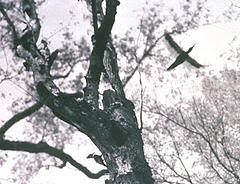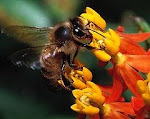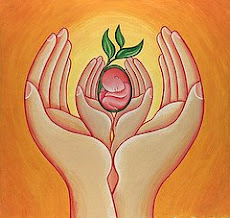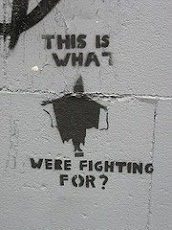Wednesday, March 11, 2009
Gerard Toulouse Responds to PHELMA students
Many worthy and stimulating questions have been raised by your students,and I will attempt to provide constructive answers in orderly fashion.
Let me today answer the first initial objection, which I rephrase (a bit brutally, I admit) as:
"Ethics is relevant for scientists, not for engineers."
I made a Google search for the following expressions:
- scientific ethics: 41,000 references
- engineering ethics: 158,000
- medical ethics: 3,390,00
- business ethics: 4,770,000
These observations (crude as they are) provide food for thought. The Wikipedia notice for "engineering ethics" contains many interesting contents. However the French version is appallingly poor. Should not some of Phelma's students consider working to improve it? Perhaps in connection with students of Ecole polytechnique de Lausanne. Long ago, EPL produced a "Serment d'Archimède", Archimedean Oath for Engineers.
More later,
with best wishes
Gérard Toulouse
(see Students Comments)
Wednesday, March 4, 2009
The Human Spirit, the Enchantment in the Forest at Galleons Lap, and the Tao
Instructions
- Read three extracts presented below from Margaret Somerville's books The Ethical Canary and The Ethical Imagination, and ONE of the two extracts from Benjamin Hoff's work, The Tao of Pooh.
- Then answer just ONE question.
- Write no more than 100 -150 words.
- Use a neutral style as studied in class (i.e. with Anglo-Saxon words and contractions).
- When you have finished submit it as a comment to this blog post.
- Margaret Somerville has kindly agreed to have a look at your ideas.
"Our contemporary search for ethics shows, I believe, that we are becoming much more sensitive than have been to [the] threats to our human spirit - the deeply intuitive sense of relatedness or connectedness to all life, especially other people, to the world, the universe and the cosmos in which we live; the intangible, invisible, immeasurable reality that we need to find meaning in life and make life worth living. In short, the human spirit is the metaphysical reality (that which is beyond the physical) that we need to fully live fully human lives." (Somerville, 2000, p.2)
"One manifestation of the human spirit or human spirituality is the longing for transcendence - the strong desire to experience the feeling of belonging to something larger than ourselves." (Somerville, 2009 p.8)
I believe our most authentic selves are to be found in the complex interactions of knowing ourselves, relating to others, appreciating our place in the great web of life, and seeing ourselves as part of the earth, the stars, the universe, and the cosmos. Some scientists tell us that we came from stardust - the earliest forms of life on earth might have arrived in meteorites that crashed; to rephrase the Ash Wednesday liturgy, "Remember man thou art stardust and into stardust thou shalt return." That fact, assuming that it will prove to be correct, and the idea that science can verify it, is astonishing and wondrous. The acute and continuous awareness of a mind-blowing web of relationships - that is what I call the human spirit. (Somerville, 2009 pp 56-57)
***
"They walked on thinking This and That, and by-and-by they came to an enchanted place on the very top of the Forest called Galleons Lap, which is sixty-something trees in a circle; and Christopher Robin knew that it was enchanted because nobody had ever been able to count whether it was sixty-three or sixty-four, not even when he tied a piece of string round each each tree after he had counted it. Being enchanted, its floor was not like the floor of the Forest, gorse and bracken and heather, but close-set grass...Sitting there they could see the whole world spread out until it reached the sky, and whatever there was all the world over was in them in Galleons Lap."
Extract by A.A.Milne cited in Hoff (1982, p.152)
"To Lao-tse (LAOdshuh), the harmony that naturally existed between heaven and earth from the very beginning could be found by anyone at any time, but not by following the rules of the Confuscianists. As he stated in his Tao Te Ching (DAO DEH JEENG), the "Tao Virtue Book," earth was in essence a reflection of heaven, run by the same laws - not by the laws of men. These laws affected not only the spinning of distant planets, but the activities of the birds in the forest and the fish in the sea. According to Lao-tse, the more we interfered with the natural balance produced and governed by natural laws, the further away the harmony retreated into the distance. The more forcing, the more trouble. Whether heavy or light, wet or dry, fast or slow, everything had its own nature already within it, which could not be violated without causing difficulties. When abstract and arbitrary rules were imposed from the outside, struggle was inevitable. Only then did life become sour.
To Lao-tse, the world was not a setter of traps but a teacher of valuable lessons. Its lessons, just as its laws needed to be followed; then all would go well. ...What he saw operating behind everything in heaven and earth he called Tao (DAO) "the Way". A basic principle of Lao-tse's teaching was that this Way of the Universe could not be adequately described in words, and that it would be insulting to both its unlimited power and to the intelligent human mind to do so. Still, its nature could be understood ..."
Extract from The Tao of Pooh by Benjamin Hoff
Questions
Answer EITHER question 1 OR question 2
1) What do the 'enchantment' in the forest described in Hoff (1989) and the the 'human spirit' defined in Somerville (2000) have in common?
2) Compare the Tao and the 'Human Spirit'. Do you think they are the same thing?
References
Hoff, B (1982) The Tao of Pooh. Egmount. London.
Somerville, M (2000) The Ethical Canary. Science, Society and the Human Spirit. McGill-Queen's University Press. Montreal
Somerville, M (2009) The Ethical Imagination. Journeys of the Human Spirit. McGill-Queen's University Press. Montreal
***
Student Responses:
For Margaret Somerville, in the Ethical Canary (2000), the human spirit is "the deeply intuitive sense of relatedness or connectedness to all life, especially other people, to the world, the universe and the cosmosin which we live". Even though the Tao explains that everything is related and in harmony due to the rules of nature, Lao tse cleary explains that being connected to other people is a mistake(unless no form of authority arises), because it leads to the loss of the path (Tao). Indeed, asking a question would be an insult to the laws of the universe, trying to explain them by words."The Way that can be described is not the true Way." (Tao Te Ching). At the same time, answering quesitons would imply reverting to the same level as the person that did ask, because Taoism states that everybody can achieve enlightenment, but needs to escape from the human world, that has put human rules to nature,therefore going further away from harmony and connectedness to the universe. Somerville's definition of the human spirit is more Confucianist than Taoist; indeed, in the Three Jewels of Tao, it is said that the way can only be found by a"refusal to assert active authority".
Sebastien
***
Dear Margaret,
I have read your writings about the Human Spirit, and also the ones of Lao-tse about the Dao. I would say that even if both texts deal with the idea of an intangible law which links all of us, they are not describing the same thing.
Lao-tse talks about it as if it was a divine rule that runs the entire world and out of which we should learn. Whereas, you see the Human Spirit as an achievement for human beings, finding the right way to lead our lives. I would say that according to you this law already exists for the human beings and it is our duty to respect it. However, in Lao-tse’s view: we should create our own way of life watching the world running around us.
Best regards
Richard
Sunday, March 1, 2009
Answers to Connections
Squirrel Wars
1.The news item concerns two species of squirrels, what are they?
The red and the grey squirrel.
2.Which one was introduced?
The grey squirrel.
3. What is the origin of the introduced squirrel?
North America.
4. What is the problem that the dominant species is causing?
The grey squirrel outcompetes the red squirrel for food and carries a virus that is passed on to the red squirrel.
5. What is the solution?
Catching and killing the grey squirrel.
6.What is the best way to catch a grey squirrel?
Use hazzel nuts as bait.
7. What is done with the carcasses?
They are butchered and the meat sold to the public.
8. Who is buying the meat and what class of people do you think it appeals to?
The meat is sold to "upmarket" or upper class butchers; the customers are probably rich people.
9. What is the RSPCA's (Royal Society for the Prevention of Cruelty to Animals) position on the culling of the grey squirrel?
The destructive management of the grey squirrel is a problem because it is now part of the modern English countryside and it would be extremely difficult to eliminate it. attempts to do so would likely fail and only result in undue suffering.
The Life of Brian
1. In the context "...you're putting us off ..." means: d) you're making us lose our train of thought
2. Why are you always on about women Stan? "...always on about women..." could be replaced by: d) always talking about woman.
3. What point is being made about gay/lesbian marriages and their fight for the right to have children.
That it is all rather silly because it is physically impossible to have children.
4. Do you think the point made by the sketch agrees or disagrees with Margaret Somerville on gay/lesbian marriages? Support your opinion.
Somerville opposes same sex marriages because implicit in the idea of marriage is the right to found a family; that is, to have children. She believes the idea of two women or two men having their own genetic children compromises the "human spirit". Loosely put, she defines the latter as the sense of connectedness to others and to nature. She is worried that the children from same sex marriages would be not quite human, and we do not have the right to put these children into a society where they may be physically or psychological at risk.
5.Where does the humour lie in this sketch?
According to Henri Bergson's essay Le Rire one of the reasons we laugh is to ridicule maladaptive or abnormal behaviour. By abnormal we could say 'unnatural' and Stan's desires to have babies is unnatural simply because he is a man. In Mikhail Bakhtin's study of the carnaval, he argues that laughter occurs when we shift from a highly stressed moral or idealistic state of mind to a carnal one. Stan's desire is purely theoretical, and it is Reg's attempts to bring him down to earth or down to reality that makes us laugh.
6.There is a common ethical theme in both listening exercises. Work with your partner and try to find it.
Common Themes
The strongest thematic connections between the two videos is the debate around the preservation of what is considered natural and the futility of struggling against an insurmountable reality.
- In 'Squirrel Wars' the red squirrel respresents the natural English countryside, the grey squirrel represents what is invasive and unnatural.
- The attempt to eliminate the grey squirrel is controversial. According to the RSPCA it is extremely difficult, if not impossible to achieve, and a culling programme may only lead to unnecessary suffering. The reason being that the grey squirrel has become part of the modern English countryside which is simply too late to ever completely restore.
- In the scene from The Life of Brian, Stan desires to have babies. It is of course is impossible for him ever to realise his dream, so why should he desire it? The scene ridicules the aspect of the human condition of yearning for things that we can never possess or achieve; and what's more, fighting for the right to do this.
- The other theme, which is implicit in the idea of unrequited and unrealistic desires, is that these wants are foolish because they are going against what is natural; that is, it is silly for Stan to want to have babies because he doesn't have a womb. It is better to live within one's limitations.
- On the other hand, if students have already studied the the radio interview with Margaret Somerville (see: Is it Right -Introducing Margaret Somerville )they will know that in 7-10 years it will be possible for same sex couples to have their own genetic children. This throws a shadow over the humour in the sketch; maybe Stan's desire to have babies is not so absurd afterall?







+II+-+socialist+art+by+night+_eulen.jpg)








